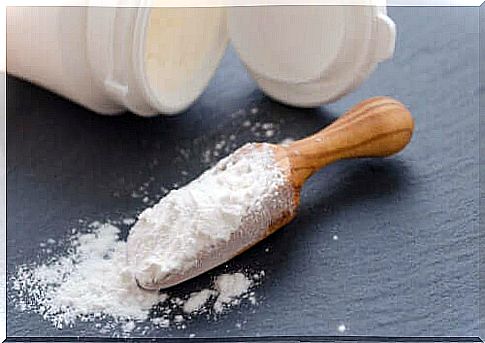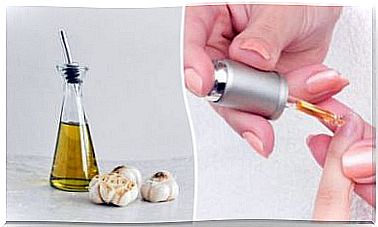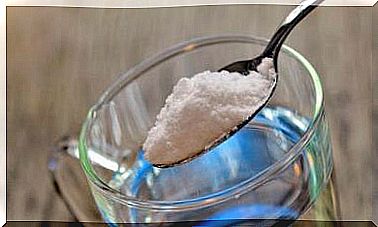Inulin: Characteristics, Advantages And Side Effects

Fiber is an important nutrient in a healthy diet. Inulin is its variation. It consists of a mixture of carbohydrates , mainly fructose. That is why it is also known as fructan.
Its ability to absorb water classifies it as a soluble type of fiber that provides a minimum amount of calories (1.5 calories per gram). It has a positive effect on health, as Kaur and Gupta write, its interactions with other ingredients make it suitable for food production.
What is this type of fiber in? What are its advantages and what is worth knowing about it?
Sources of inulin
More than 36,000 plant species contain inulin, but only some of them contain large amounts of it. Plants that produce a lot of fructans include those from the Liliaceae family , such as onion, garlic, asparagus and leek, and those from the Compositae family – chicory and artichokes.
The table below shows the inulin content in 100 grams of dry product:
- Artichokes : 89%.
- Chicory : 79%.
- Dahlia : 59%.
- Onions : 48%.
- Leek : 37%.
- Garlic : 29%.
- Asparagus : 4%.
- Banana : 2%.
- Rye : 1%.
Chicory is the best source of inulin available on all continents. More popular foods such as onions and garlic provide moderate amounts of it.
Inulin can be consumed naturally or as a supplement, which makes it easier to take. A specialist should prescribe the dose.
Inulin: action
Inulin has various health-promoting properties and is widely used in the food industry. Let’s take a look at its features.

Has the function of a probiotic
One of the best known advantages of inulin is its probiotic effect. In other words, it stimulates the multiplication of the intestinal microbiota. Its bacteria fight pathogenic microbes.
Macfarland and other experts have proven through laboratory and human testing that inulin stimulates the multiplication of bifidobacteria and lactobacteria and reduces the amount of Clostridium .
Probiotics help digest lactose and protect against diarrhea, irritable bowel syndrome and inflammation of the intestines. They also prevent urinary tract infections and strengthen the intestinal barrier.
Controls blood lipids
A Chilean medical journal published a clinical essay on 12 obese patients with elevated blood lipids. They were given 7 grams of inulin as a source of fiber. After a few months, their cholesterol, LDL cholesterol and triglycerides levels dropped.
Other human studies have shown a positive effect of inulin on the lipid profile. In some cases, there has been a decrease in triglyceride levels, but the study did not show results in patients with type 2 diabetes.
Regarding the dose, research shows that taking 6 to 12 grams of inulin daily for 2 or 3 months leads to a decrease in blood cholesterol levels. It appears to stimulate the excretion of it in the stool.
It helps to keep weight
Some studies attribute a role to inulin in modifying the action of ghrelin that regulates appetite. Although this aspect requires a deeper study, this ingredient does increase the feeling of fullness.
This means that fewer calories are consumed. Studies have shown that including inulin in the diet for 12 to 18 weeks can lose 1 to 6 kilograms. Moreover, it prevents the accumulation of fat in the liver and muscle tissue.
Regulates blood sugar levels
Insulin is the hormone responsible for regulating blood sugar levels. It transports glucose from the bloodstream to the muscles and liver, where it is metabolized.
Inulin, like other types of soluble fiber, helps lower blood sugar, increases insulin sensitivity, and increases the absorption of sugars at the cellular level.
It improves the absorption of calcium and magnesium
Some researchers have established a positive effect of inulin on the bone composition and density of test animals as it increases calcium absorption.
In adolescents, 8 grams of inulin per day are needed for 8 weeks to see positive results. The Journal of Nutrition reports that it also increases the absorption of magnesium.
Replaces fat
In the industry, inulin is used as a gelling agent to replace fat in light products . According to the journal Phytochemistry , when long-chain inulin is dissolved in water or milk, tiny crystals are formed to give a creamy texture.
Replaces sugar
Inulin can be used as a sugar substitute. The short chain one has a sweet taste and similar properties. Replacing half of the sugar in a muffin recipe gives very good results.
Modifies the consistency
Inulin modifies the consistency of the products. Mortadella with the addition of inulin is more compact when it contains at least 2.5% of this substance.

Inulin: side effects
The properties of inulin can be safely enjoyed by adhering to the recommended amounts. When the daily intake exceeds 7 to 10 grams, you may experience:
- Stomach pain and a feeling of fullness.
- Gas and gas.
Therefore, it is recommended to consume 2 to 3 grams per day in the first 15 days. You can then gradually increase the dose by 1 to 2 grams per week until it reaches 10 grams per day.
People following a low-carbohydrate diet or FODMAP should avoid inulin. However, it is worth remembering that it has specific advantages, especially for the digestive system. However, you should not overdo it and eat it in moderation. If you want to take it as a supplement, it’s best to check with your doctor first.









